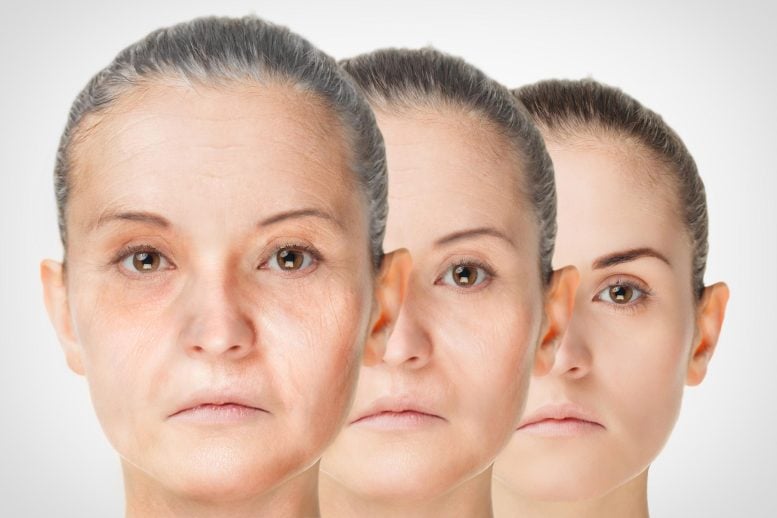Columbus, Ohio — Preserving threatened coral reefs is no longer enough. Now, we must help build new ones, say Ja Young Kim, 17, and Jiho Kong, 19. They’ve just designed one new option: robotic nurseries to attract and nurture baby corals.
These modular units start as floating, hexagon-shaped cells. Once deployed in the water, they can link together to make large ocean habitats. These apartment-like structures even monitor for potential dangers. Before turbulent weather might turn young colonies belly-up, robots can propel the coral apartment buildings to safety.
 Ja Young Kim and Jiho Kong stand on a beach in Saipan — one of the islands making up the Mariana Archipelago.J.Y. Kim and J. Kong
Ja Young Kim and Jiho Kong stand on a beach in Saipan — one of the islands making up the Mariana Archipelago.J.Y. Kim and J. Kong
Jiho and Ja Young live in Saipan. It’s the largest of the 14 Northern Mariana Islands, a volcanic archipelago north of Australia. The world’s deepest ocean site — the Mariana Trench — lies just east of this island chain.
Saipan is “a beautiful place that is surrounded by the ocean,” notes Jiho. “I’m a diver.” Just off the white sand beaches here, “there used to be a beautiful coral reef.” A few years ago, the coral here appeared “every different color,” Jiho recalls. No longer. The reef is now bleached white and dead.
Dying coral is “not just a story that we can hear from newsletters or books,” Ja Young says. For her, the problem can’t be ignored. So she and Jiho teamed up to build a fleet of robotic apartment complexes for baby coral. It would provide them homes. And being mobile, they can move when storms threaten.
Their work earned these juniors at Saipan International School a place here, last month, as finalists at the 75th annual Regeneron International Science and Engineering Fair, or ISEF. Society for Science — which also publishes this magazine — created ISEF and still runs it. This year’s 1,657 finalists came from 62 nations or territories. Together, they took home nearly $9 million in prizes.
Singing apartment blocks
Each cell is about the size of a small microwave oven. Individual cells can link up with others, forming platforms that roll with the waves.
For this project, “We created everything,” says Ja Young. “We 3-D printed everything.” They chose materials that will break down in the ocean over time. That way, they won’t pollute the environment if individual units separate and get lost.
The duo tested their cells’ ability to link up in a borrowed swimming pool in Korea, says Ja Young. “And then we borrowed this wave-creating machine in order to make sure [their habitat won’t] just float away.”
Their system consists of two types of cells. The first offers a safe harbor for coral larvae. They can attach to these “coral cells” and grow. The second are power cells. These similarly shaped units can drive the coral-housing units. Each power cell “has a propeller,” Ja Young points out, and runs on solar energy. So power cells can motor coral cells to the perfect nursery location. Once they arrive, these cells can link together. A tether connects them to the ocean floor. This ensures they won’t drift away.
To advertise the housing units have arrived, the cells sing a song.
This “special soundscape,” Ja Young explains, “can attract the coral larvae onto the structure.” Its melody — “the sound of healthy corals” — sounds like soft bubbles and gently sloshing water, she says. When larvae hear it, they’ll flock to it as they would to a healthy reef.
 When deployed underwater, a coral cell (left unit) provides a safe haven for larvae to establish new colonies. A power cell (right unit) can link with that undersea houseboat and propel it to safety when dangerous storms may threaten these accommodations.J.Y. Kim and J. Kong
When deployed underwater, a coral cell (left unit) provides a safe haven for larvae to establish new colonies. A power cell (right unit) can link with that undersea houseboat and propel it to safety when dangerous storms may threaten these accommodations.J.Y. Kim and J. Kong
These can be mobile homes
Once they arrive, the tiny larvae begin setting up a new artificial reef. However, this apartment complex can do something natural reefs can’t. It can flee danger.
This could counter a problem seen with other coral-restoration systems. Jiho and Ja Young learned that many weren’t very successful. Take the type known as coral trees. Once installed on the ocean floor, many of these vanish.
For every 10 coral trees installed, “eight will be missing by the end of the year,” Ja Young says. No one knows what happens to them. “We wanted to fix that,” she says.
Their solution was to build an escape plan into their housing units. For example, Ja Young says, “There could be a typhoon coming.” The undersea waves kicked up by such a storm could destroy the cells. “We cannot make the house not blow away,” she says. But “we can make it run away.”
Their coral-housing units not only can move, but also decide when it’s time to move.
Jiho spearheaded this part of the project. “I wanted to link my knowledge about robotics and computer science to this project,” he says.
He linked the cells to the internet so they can receive ocean data. These include temperature readings and other weather updates from the National Oceanic and Atmospheric Administration. They use open-source data, which are freely available for all to use.
Their system’s motorized cells use these data to make decisions. If a dangerous storm looms, these cells will know. They can turn on their propellers and head for safer waters. An “algorithm and the website itself can also designate a destination,” says Ja Young.
Even if people do nothing, these cells can execute an escape. Thanks to clever programming, the cells can pick their own destination. They also can calculate the best route. This escape feature sets their technology apart from other coral-transplant systems, says Jiho. Few such technologies can flee danger. And those that do need a lot of human help. Human labor makes them “less efficient in both cost and time,” Jiho says.
Each cell costs about $120 to make, says Ja Young. That’s far less than similar technologies. Most, he says, cost about “a thousand times more.”
The coral apartments must still undergo ocean tests. Simulations show a lot of promise. However, unseen problems could occur.
Ja Young recalls the kaleidoscopic colors of local reefs from snorkeling trips with her dad. “‘It’s pink! Blue! It’s colorful inside,” she remembers. She was in middle school then. Today, waves sweep bleached coral fragments onto the sand. Ja Young hopes their new invention will do more than try to preserve the past. She hopes it will rebuild a more colorful future.







.jpg.webp?itok=1zl_MpKg)





 Bengali (Bangladesh) ·
Bengali (Bangladesh) ·  English (United States) ·
English (United States) ·